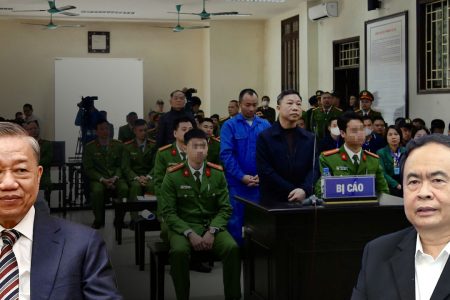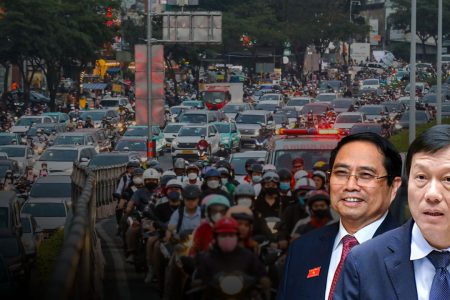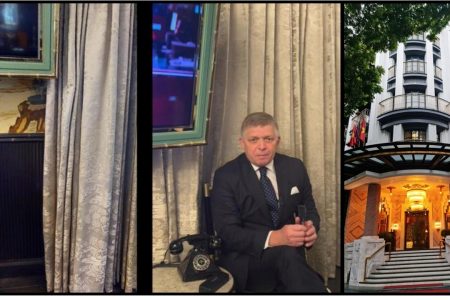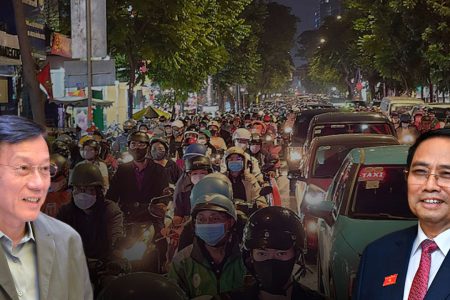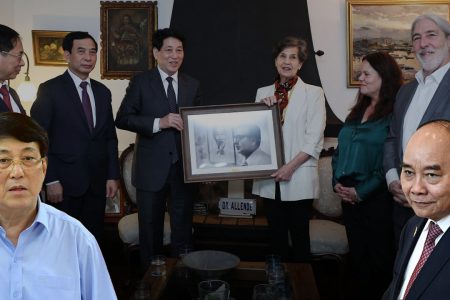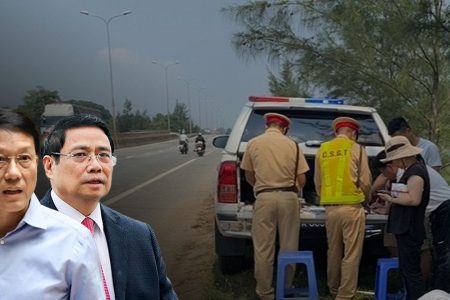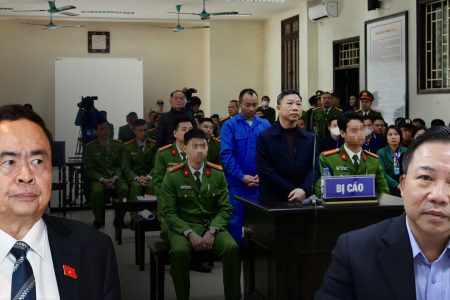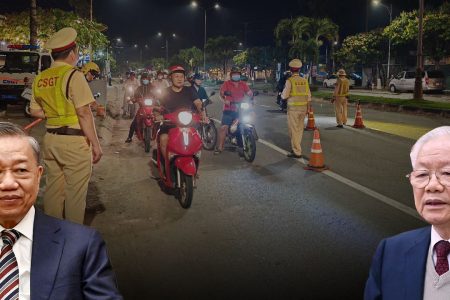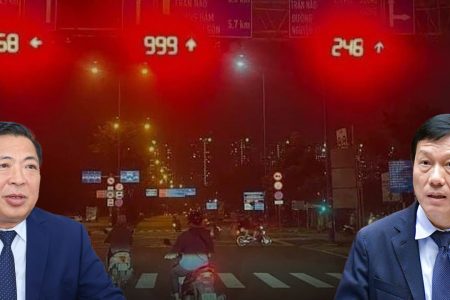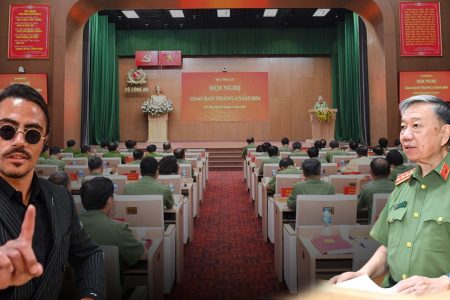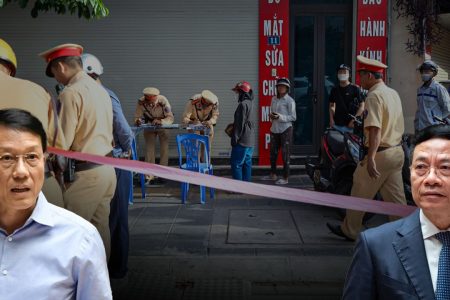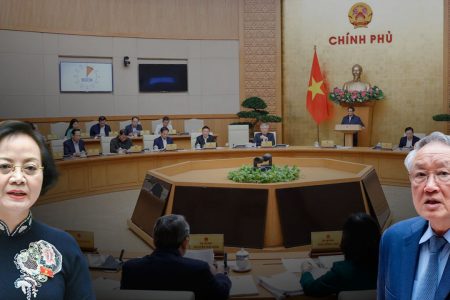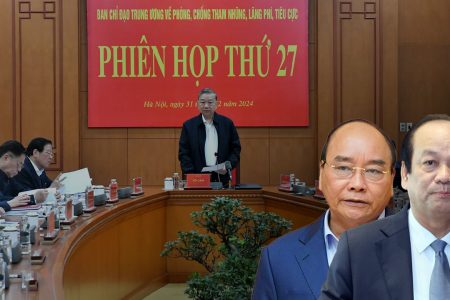While Cambodian media reported that the Cambodian Ministry of Foreign Affairs has just sent a diplomatic note to the Vietnamese Embassy to request the removal of border guards camps built in the disputed border areas between the two countries, in the East Sea (South China Sea), Chinese state newspaper, Global Times, reported that China has harvested 1.5 tons of vegetables at its largest military base on Phu Lam Island in Vietnam’s Hoang Sa (Paracels). While the war against COVID-19 has not ended, Vietnam is facing with border and sovereignty issues, both in the South China Sea and inland.
Late last month, Cambodia asked Vietnam to lift its checkpoints in the “white zone,” a disputed area that has not been formally demarcated between the two countries, close to Vietnam’s border with An Giang province and Cambodia’s Kandal province, after Cambodian authorities discovered many Vietnamese camps in the disputed area.

The camps that Cambodia refers to are the control points that the Vietnamese border guard recently set up to “carry out dual duties, protecting the sovereignty of national border security and performing the urgent duty of defense against COVID-19,” according to Vietnamese media.
From 23.59 on March 20, 2020, the Kingdom of Cambodia has temporarily stopped entry for Vietnamese citizens. And Vietnam has begun to apply a moratorium on border crossing operations along border gates and trails and open routes with Cambodia since 00:00 on April 1, 2020. A series of checkpoints have been erected along the border of the two countries to control people passing between the two countries.
After talks at the provincial level, the Vietnamese border guard said it would remove the camps. However, so far only 3 sheds have been removed, and the remaining 28 sheds remain in the area, according to the Khmer Times.
“The government (Cambodia) sent a diplomatic note to the Vietnamese government on May 13,” Khmer Times quoted Var Kimhong, chairman of the Cambodian Border Committee.
Cambodian officials said the content of the note requires Vietnam to remove all camps.
Lieutenant General Leang Phearom, director of the Cambodian Border Police Department, said Cambodia’s policy was “to try to find a peaceful solution with neighboring countries, not to use force to avoid creating tension, including keeping calm in all situations and negotiating.”
Vietnam and Cambodia share a common border of 1,270 km. After numerous border clashes, the two sides have pushed for demarcation in recent years.

On October 5, 2019, in Hanoi, Vietnam and Cambodia signed two documents to resolve the issue of border markers. This is the first time a legal document has recorded the border between the two countries.
The 84% ratification of the border delineation work is completed between the two countries.
Over the past half century, Vietnam and Cambodia have conducted many negotiations and signed many legal documents to recognize the results of the border settlement between the two countries.
The Vietnam-Cambodia land border has been planned in the national border planning treaty signed on December 27, 1985 and the supplementary treaty of the national border planning treaty signed on October 10, 2005.
On the basis of these two treaties, Vietnam and Cambodia have implemented border demarcation and boundary planting work since the beginning of 1986. By December 2018, the two sides had completed about 84% of the public workload demarcation, landmark planting and this result were legalized by the two parties in the event on October 5, 2019.
It is expected that at the end of June, the 1st Vietnam-Cambodia Border Defense Friendship Exchange Program will be held on the 43rd anniversary of Cambodian Prime Minister Hun Sen’s journey. The program is expected to have the participation of high-ranking leaders of the two countries Vietnam – Cambodia, leaders of the Vietnamese Ministry of Defense, representatives of the provinces in the Military Zone 7. This is an important political event, contributing to promoting people-to-people exchanges and twinning between the two sides of the border, helping people of the two countries have more opportunities to exchange and exchange national culture, to cooperate and share experiences in production export …
However, Vietnam – Cambodia relations in recent years have been hindered by the Chinese factor.
More than 4 decades after Vietnam defeated and overthrew the Khmer Rouge regime, then brought the party of Mr. Hun Sen, the Cambodian People’s Party – CPC, to power, the relationship between the two communist countries brothers which had been with each other through the historical periods, now no longer attached as before.
The relationship has become complicated, largely because Cambodia is increasingly closer to China, which is in dispute over territorial / territorial sovereignty with Vietnam and some other countries in the South China Sea.
Cambodia is increasingly dependent on China in many areas such as economy, security, defense … Tension in Vietnam – Cambodia relations has increased after 3 Chinese warships landed at Sihanoukville, PM Hun Sen has made many visits to Beijing in recent years and especially a joint exercise called “Golden Dragon” between China and Cambodia was organized to deter Vietnam.
In mid-March, despite COVID-19, nearly 3,000 Cambodian soldiers, six helicopters, nine tanks and 12 armored vehicles fought a large military exercise with China. For its part, China mobilized 265 soldiers, 6 helicopters, 9 armored vehicles and many other heavy weapons for this exercise.
This is the fourth Golden Dragon exercise between Cambodia and China in the rehearsal area of 10,000 hectares.
Experts say that the traditional friendship between Vietnam and Cambodia is in danger of being broken, depending on how China uses its influence with Phnom Penh and how Cambodia responds to this pressure.
While the land border is dynamic, outside of the South China Sea, China boast with the great victory of harvesting 1.5 tons of vegetables at its largest military base on the island of Phu Lam.
China sees this as a great success in the dispute over sovereignty in the South China Sea because according to the United Nations Convention on the Law of the Sea (UNCLOS), where maintaining human habitation, having a strong economy, independent of imports from outside, they are eligible to become an official island.
No Chinese military and artificial island bases in the South China Sea meet the above standard.
Therefore, all artificial islands built by China to assert sovereignty are considered “rocks” or “non-islands” in the ruling of the Permanent Court of Arbitration in 2016.
Turning artificial islands into an official island is a long-standing problem for Beijing, since all the settlements built on the South China Sea lack fresh water and arable land.
China has attempted to build greenhouses and bring fertile land from the mainland, but until recently failed to plan “food self-sufficiency” for bases on Phu Lam Island in the Paracel Islands and Stone Cross in the Truong Sa (Spratlys).
The sandy farming project of Phu Lam Island is a Chinese military project in collaboration with a leading research university of this country – Chongqing Jiaotong University.
According to the Chinese newspaper, the team has successfully “turned sand into rich soil” to create a fertile environment for vegetation, paving the way for agriculture with the “self-sufficiency” ability on islands, rocks claimed by China conflict with other countries.
According to RFA, in addition to cultivation, Beijing has also strived to build electricity generation capacity and filter seawater into fresh water, deploying a series of incentives such as housing, subsidies … to attract people to live on the disputed islands.
Since 2015, satellite images published by DigitalGlobe show that China is expanding the islands of Phu Lam and Quang Hoa in the Paracels. The old runway on Phu Lam Island has been replaced with a new, longer runway.
The runway on Phu Lam island was about 2,300 m long before Beijing upgraded it in 2014. Satellite images show China is expanding the runway to reach a length of about 3,000 m.
By 2018, the total area of Phu Lam Island combined with Stone Reef (into a single island) will reach about 3.18 km2 (of which the natural area of Da Island is only about 0.065 km2, and the original natural area of Phu Lam island is about 1.5 km2).
Thoibao.de (Translated)



